
Katelynn Sobus / Cats.com
Ear mites may be small but they can cause big problems for your cat. The best ear mite treatment tackles the infestation while reducing symptoms, giving your cat relief from itching and inflammation.
Because it’s affordable and effective and popular among cat owners, PetArmor Medication for Ear Mites for Cats is our top choice. Keep reading to learn more and to see our other picks.
At a Glance: Our Top Picks for Best Ear Mite Treatment for Cats




We highly recommend looking at the comparison table we have below where we highlighted the features of each product. You’ll also find more detailed information about each product later in the article.

PetArmor Medication for Ear Mites for Cats
- Pyrethrins and piperonyl butoxide active ingredients
- Soothing aloe relieves itching and inflammation
- Easy to administer, just 5 drops in each ear twice daily

Adams Medication for Ear Mites for Dogs & Cats
- Contains soothing aloe and lanolin
- Kills ear mites on contact
- Safe for use in both cats and dogs

Hartz Medication for Ear Mites
- Individual tubes to keep the product fresh
- Contains soothing aloe to relieve itching and irritation
- Kills ear mites on contact

Revolution Topical Solution for Cats
- Simply application directly on the skin
- Provides a full 30 days of protection
- Works against fleas, heartworms, and intestinal parasites

Arava Natural Ear Mite Treatment
- Contains 9 all-natural ingredients
- Results are visible within 10 days
- Unconditional 30-day money-back guarantee

Sentry HC EARMITE Free Ear Miticide for Cats
- Kills ear mites quickly and effectively
- Contains aloe to soothe itching
- Water-based, non-greasy formula

Zymox Otic Pet Ear Treatment with Hydrocortisone
- 1% hydrocortisone to reduce inflammation
- Non-toxic formula won’t irritate your cat’s skin
- Naturally occurring enzymes fight infection
Before we get into the details for PetArmor Medication for Ear Mites for Cats and the rest of our top recommendations, let’s talk about ear mites in cats including what they are, how to identify them, and how to treat them.
Does Your Cat Have Ear Mites?
Cats get ear wax just like we do, but if your cats ears develop a dark, foul-smelling discharge accompanied by itching and inflammation, it could be something more.
Ear mites – also known as Otodectes cynotis – are microscopic parasites that live in and around the ears of cats. They’re barely visible to the naked eye, though you may see them as tiny white specks if you look very closely. You’re more likely to notice the symptoms of ear mites than the mites themselves.
Symptoms of ear mites include the following:
- Brown or reddish-brown discharge
- Dark, waxy crust inside or around the ears
- Foul odor coming from the ears
- Head shaking or excessive scratching
- Hair loss around the ears
Ear mites can’t hop or fly, but they can crawl and once they set up shop in your cat’s ears and start to breed, they can be difficult to eradicate.
An adult ear mite lives for about 2 months and lays eggs continuously throughout its lifespan. The eggs take about three weeks to mature to adulthood at which point they start laying eggs of their own. Not only do ear mites breed quickly, but they are very contagious and can be passed to other pets in your household. Transmission to humans, however, is incredibly rare.
Before you treat your cat for ear mites, pay a visit to your veterinarian to confirm that’s what it is. A common cat ear infection, otitis externa, is often confused for ear mites.
How Do You Get Rid of Ear Mites?
Once your veterinarian diagnoses your cat with ear mites, there are a few treatment options available. In most cases, however, treatment begins with a thorough cleaning of the cat’s ears.
When cleaning your cat’s ears, it’s a good idea to choose a high-quality ear cleaner designed specifically for that purpose. Avoid products that contain irritating ingredients like alcohol or hydrogen peroxide and follow the instructions carefully.
We recommend a cat ear cleaner like Virbac Epi-Otic Advanced Ear Cleaner for Cats and Dogs. It’s a safe, non-irritating formula made with salicylic acid to help gently remove debris and excessive wax from the ear canal. Shake the product well then apply liberally into the cat’s ear canal. Rub the base of the ear to distribute the fluid then wipe the interior of the ear clean with cotton swab or a clean cloth.
Cleaning your cat’s ears removes anything that might prevent topical medications from reaching the mites. Veterinarians generally recommend a ear mite medicine that contains an antiparasitic like ivermectin or cat-safe insecticides like pyrethins as the active ingredient.
Remember, if you’re treating one pet in your household for ear mites, it’s best to treat all of them. Even if none of your other pets exhibit an active infection, they could transmit the mites back to your cat and restart the cycle. You may also need to repeat treatment for long-term management of ear mites.
Another option for getting rid of ear mites is to use a flea or tick medication. While many of these products aren’t labeled for ear mites, they can be an effective treatment.
Our top pick for the best over-the-counter flea medication is Sentry Fiproguard Flea and Tick Topical for Cats. Sold in 3- and 6-dose packages, this topical treatment kills fleas, ticks, and chewing lice and it starts working in just 30 minutes after application. For more long-term protection, consider the Bayer Seresto Flea & Tick Collar which provides 8 continuous months of protection.
Why Trust Cats.com?
The Cats.com family is a team of real cat owners that vets each of our recommendations thoroughly. To choose the best ear mite treatments, we researched 22 brands, read through hundreds of consumer reviews, and consulted with veterinarians for their thoughts.
We looked for products that not only treat ear mites effectively, but also help soothe your cat’s itchy ears during treatment. We also ensured that each product chosen is safe and effective.
Top 7 Best Ear Mite Treatment for Cats Reviewed
Now that you have a better understanding of what ear mites are and how to treat them, you’re probably eager to learn more about the products we recommend for treatment.
Here are our top picks for the best ear mite treatment for cats you should consider:
Ear Mites vs. Ear Infection in Cats
It’s important to properly diagnose your cat before starting any form of treatment. The trouble with ear mites is that the symptoms are similar to the symptoms of other ear infections like otitis media.
So, how do you tell the difference between an ear mite infestation and an ear infection?
First and foremost, you should know that ear infections are relatively uncommon in cats (though the same can’t be said for dogs). Ear infections are typically characterized by inflammation of the external ear canal and may be accompanied by itching, head shaking, discharge, and foul odor.
Sound familiar? Ear mites and ear infections cause similar symptoms which isn’t surprising given ear mites are a potential cause for cat ear infections.
Cat ear infections can also be caused by allergies, bacteria, yeast, or fungal infections but the most common cause is ear mites. These tiny parasites feed on the wax buildup and dead skin cells inside the ear, all the while causing significant irritation. Ear infections caused by yeast and bacteria are not contagious, but ear mites definitely are, so prompt treatment is important.
Whether your cat’s symptoms are caused by ear mites or another type of ear infection, it’s not a problem you should ignore. Not only can these issues cause significant discomfort (even pain), but the condition can worsen to the point that it causes damage to the internal structure of your cat’s ears.
It’s always worth taking your cat to the vet just to be safe. Your vet will use an otoscope to look inside your cat’s ear canal and may take samples of discharge to check for mites.
How To Choose the Best Ear Mite Treatment for Your Cat
Every cat’s situation is different, so every cat parent will be looking for different things in their ear mite treatment. Before buying, consider the following:
Affordability vs Effectiveness
Luckily, there are cheap and effective over-the-counter ear mite treatments. However, these do tend to take longer to work than prescription medications, and in some instances they don’t remove the ear mites completely.
For a faster solution, you’ll want to look at prescription options such as Revolution.
Treatment vs Prevention
Before deciding on an ear mite treatment, consider whether your cat is likely to get ear mites again. This will help you decide whether a long-term prevention medication is necessary.
Cats are likely to get ear mites repeatedly if they go outdoors, especially around unknown animals such as stray cats in your neighborhood. They’ll also be regularly exposed to other parasites such as fleas and ticks.
If you’ve just rescued a cat who you plan to keep indoors, they’re very unlikely to contract ear mites again. The exception is if you have a dog or other pet who does go outside regularly and isn’t on preventative medications.
Other Pests
Treating a cat who only has ear mites is sometimes different from treating a cat who also has fleas or other parasites. Depending on the parasites, you may be able to find a singular treatment that kills them all.
For instance, many flea and tick medications also kill ear mites. Your veterinarian may recommend using one of these instead of a treatment that only kills the mites.
Or, your veterinarian may recommend two or more medications to eradicate all of the parasites.
Non-Active Ingredients
Alongside the active ingredients that kill ear mites (typically pyrethrins, ivermectin, or selamectin), you might also want to look for non-active ingredients to soothe your cat’s irritated ears. These include aloe and lanolin.
Are There Any Herbal Remedies for Ear Mites?
While pyrethrin-based ear mite medication is highly effective, some pet owners prefer more natural options. Giving your cat’s ears a good cleaning could be enough to keep minor infestations under control, but a little extra help never hurts.
Apple cider vinegar is a popular ingredient in natural remedies for humans and pets alike. It is highly acidic and has natural antibacterial properties. To use apple cider vinegar for ear mites, mix one part apple cider vinegar with one part water and apply to your cat’s ears once or twice a day. Use just a few drops and rub the base of your cat’s ears to distribute it before wiping away the excess.
Avoid home remedies using essential oils as these can be toxic for cats. You can, however, try warming coconut oil and adding 8 to 10 drops to your cat’s ears before massaging it in.
Relevant Articles
- Ear Mites in Cats: Causes, Symptoms & Treatment
- Cat Ear Infection: Causes, Symptoms, & Treatment
- Ear Discharge in Cats: Causes, Symptoms, & Treatment
Frequently Asked Questions
What’s the difference between ear mites and ear infections?
Ear mites and ear infections have very similar symptoms. In addition, your cats can have both at the same time, since ear mites can cause ear infections.
See your veterinarian for a proper diagnosis. Remember to never ignore ear issues in your cat, as this means leaving them in considerable discomfort or pain. It can also lead to permanent damage to the ears or the infection spreading to other parts of the body.
Are there any herbal remedies for ear mites?
Many natural solutions for ear mites don’t work and can further irritate your cat’s ears. While we understand the desire to treat these pests naturally, medications containing pyrethrins, ivermectin, or selamectin will provide faster and more reliable treatment for your cat.
Can you treat cat ear mites without going to the vet?
You can treat ear mites without going to the vet. There are several over-the-counter options.
That said, you should see your vet if your cat’s symptoms don’t improve after the first round of treatment. They may have other ear issues, such as an ear infection, that require treatment. Or, you may need a stronger prescription medication to fully rid your cat of the mites.
Are there one-time ear mite treatments for cats?
Revolution is the best one-time ear mite treatment for cats. It will get rid of your cat’s current infestation completely.
However, please keep in mind that you’ll also need a change in environment, such as keeping your cat indoors, to prevent the ear mites from returning. Otherwise, you may want to look into keeping your cat on Revolution or another preventative medication to keep them from coming back.
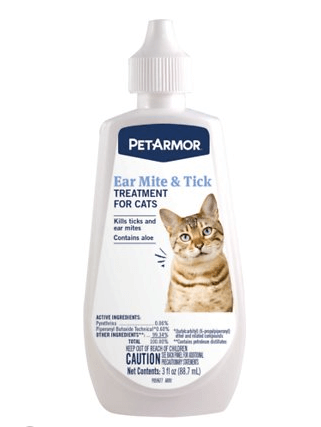
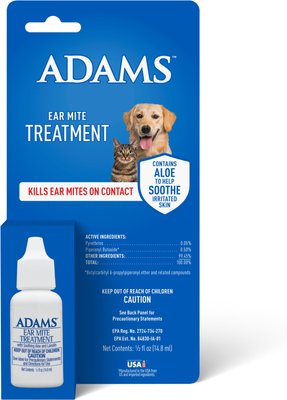
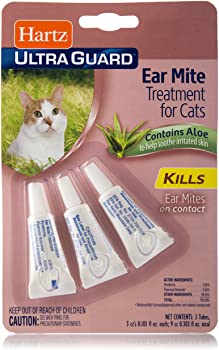
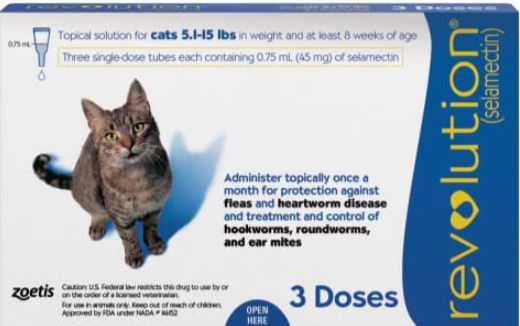
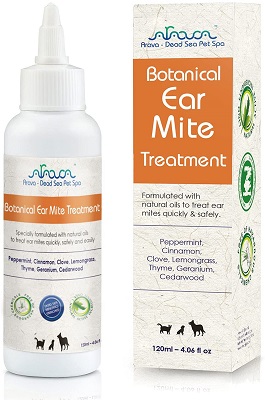
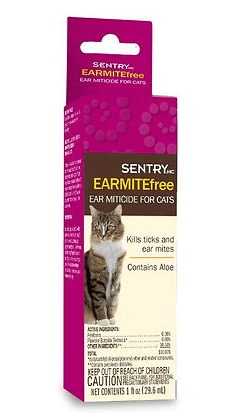
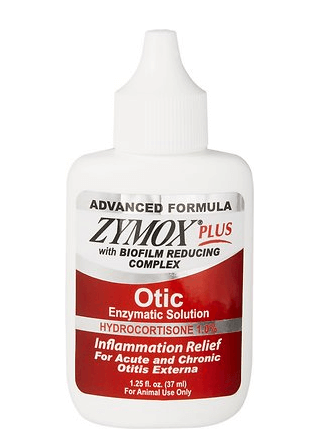
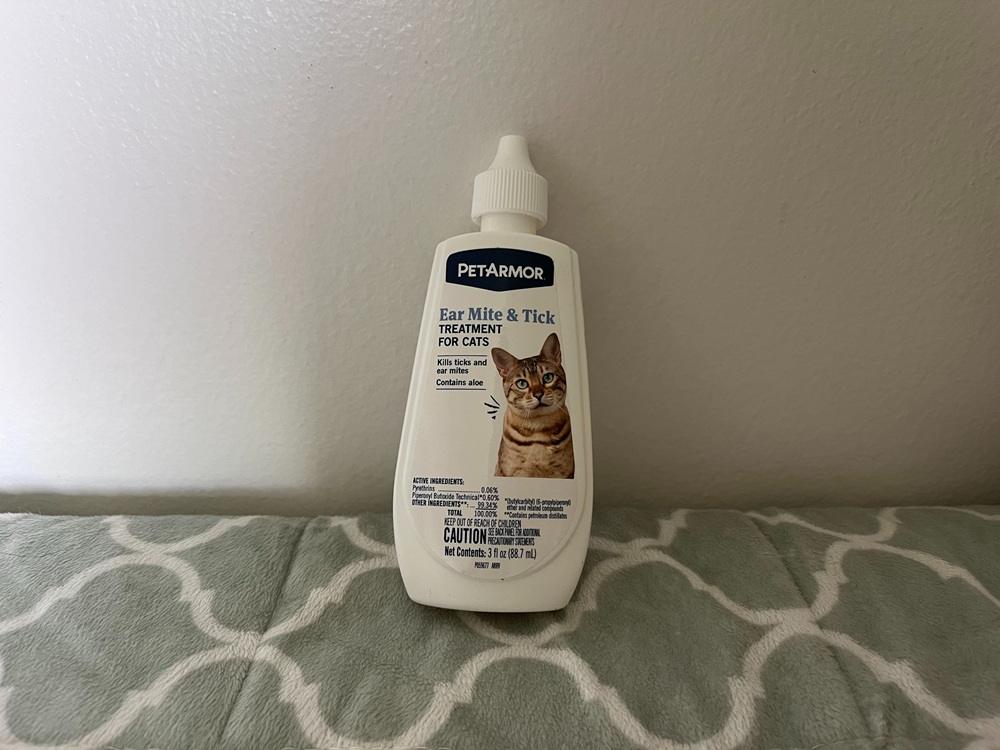

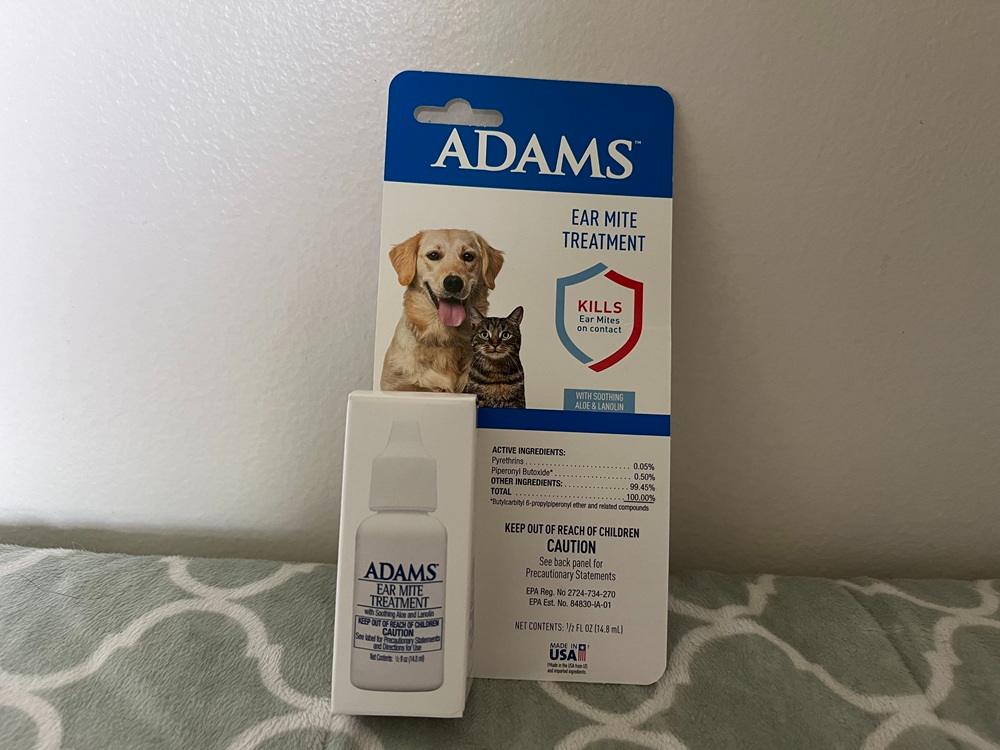
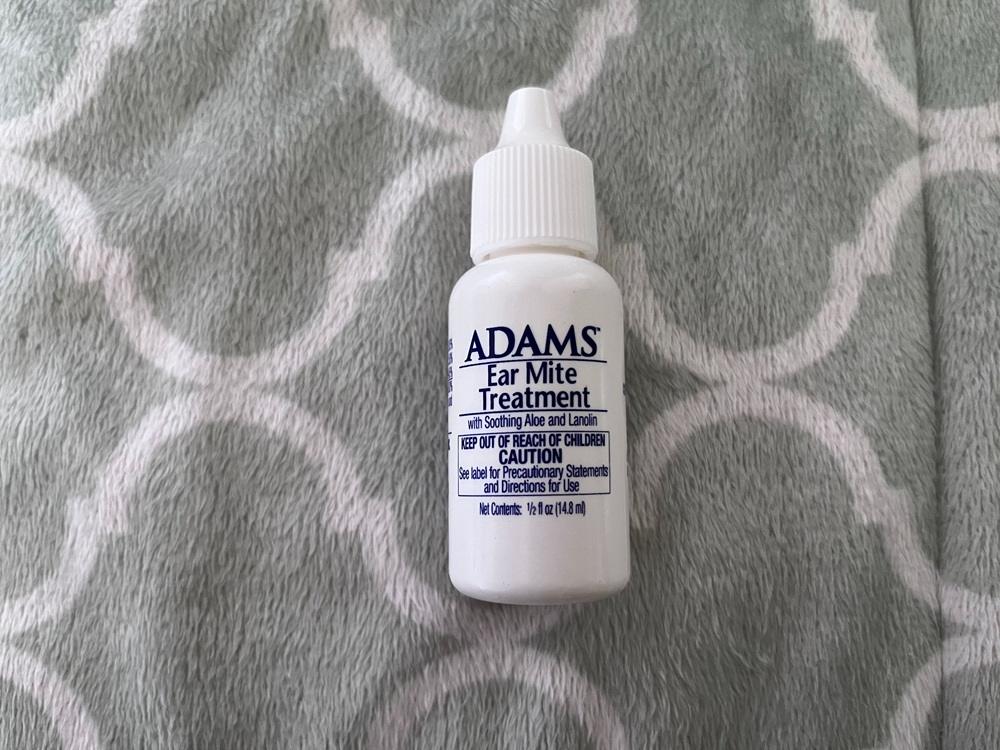
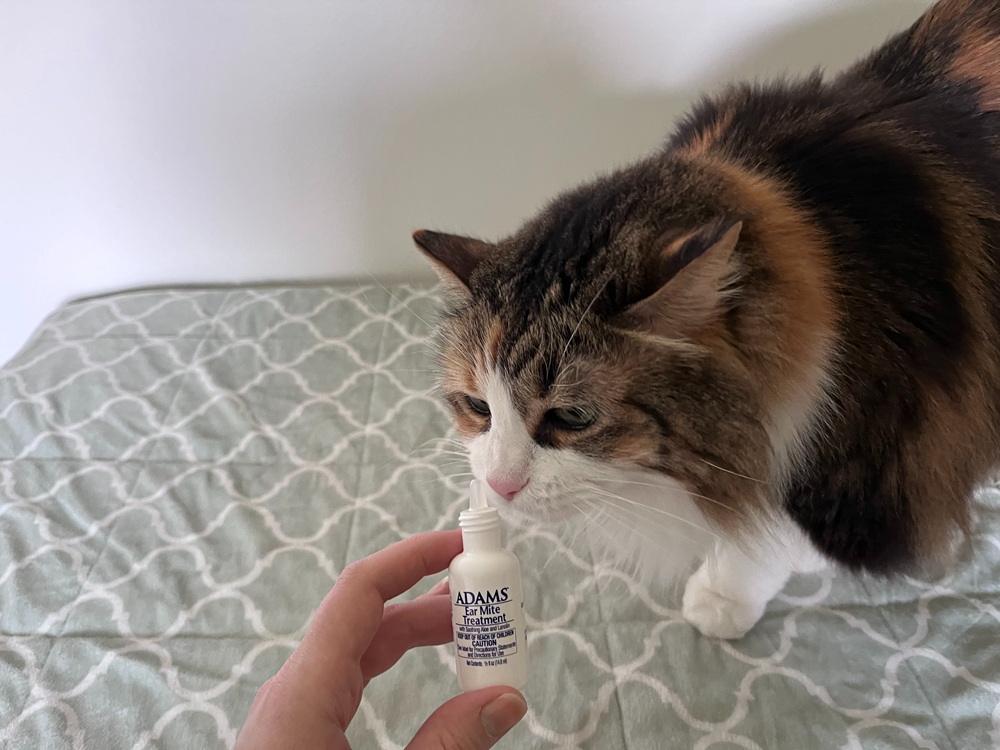
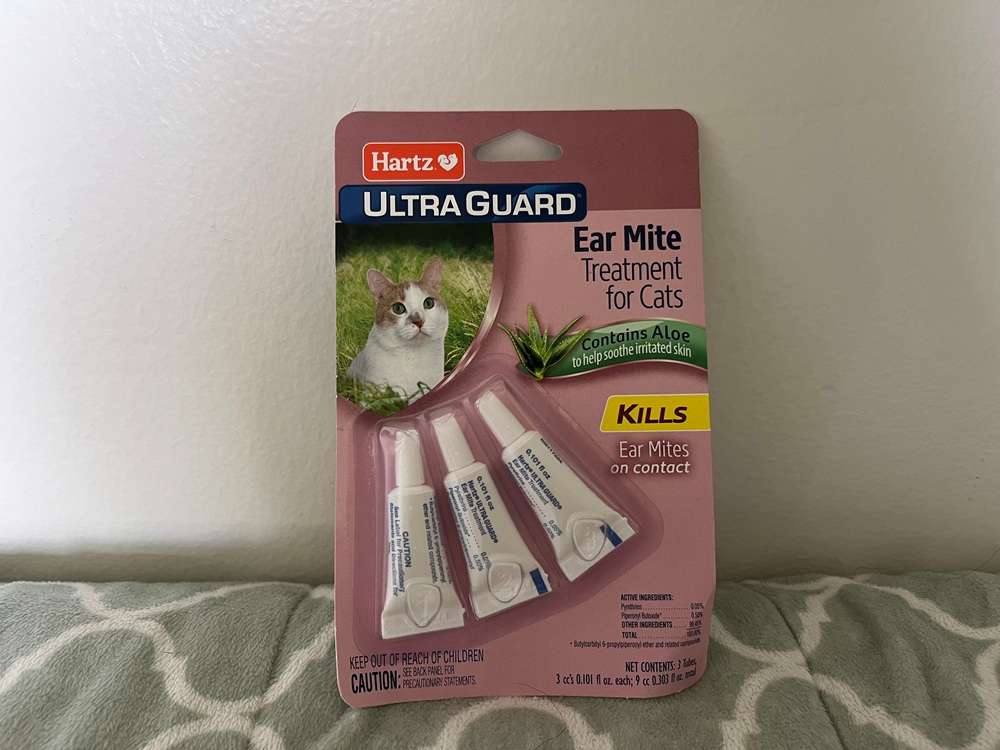

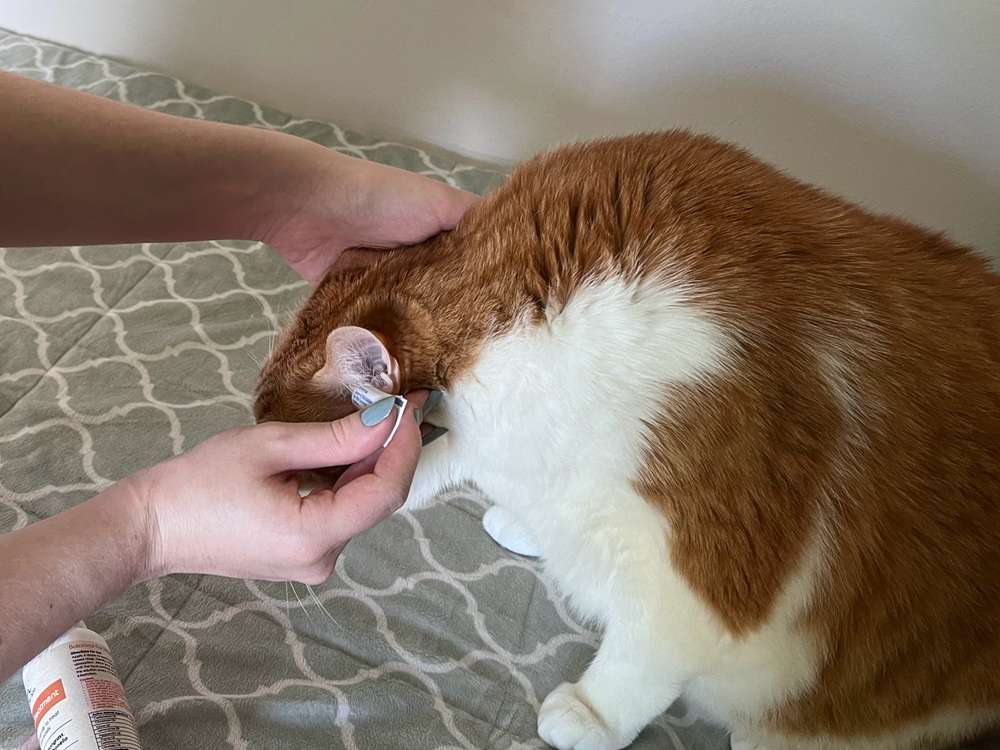

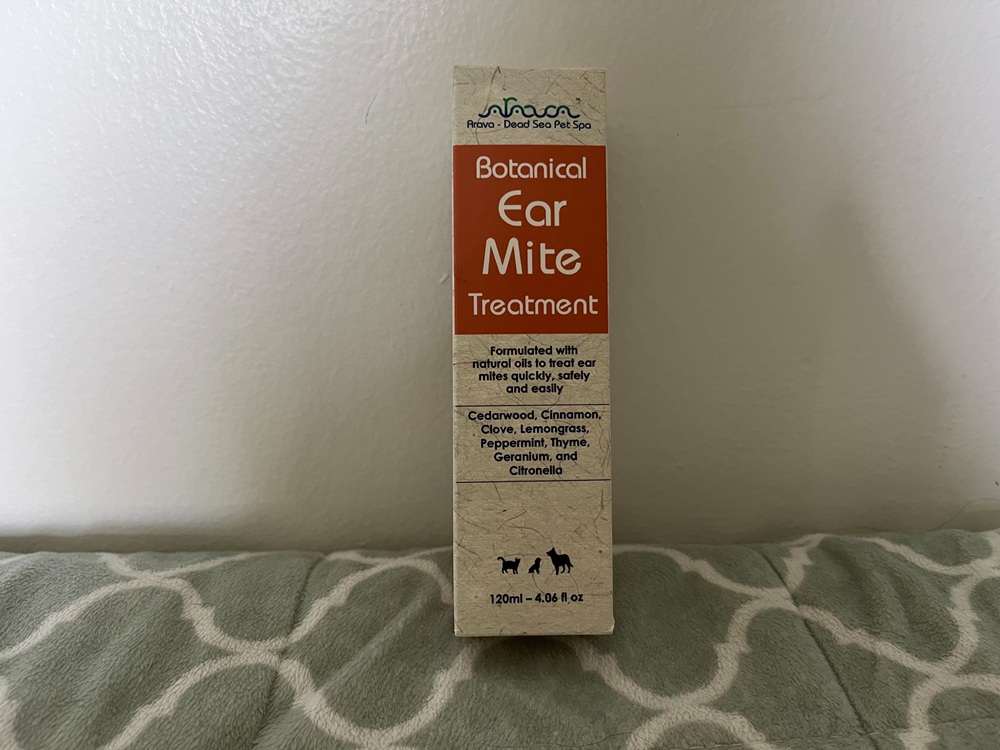
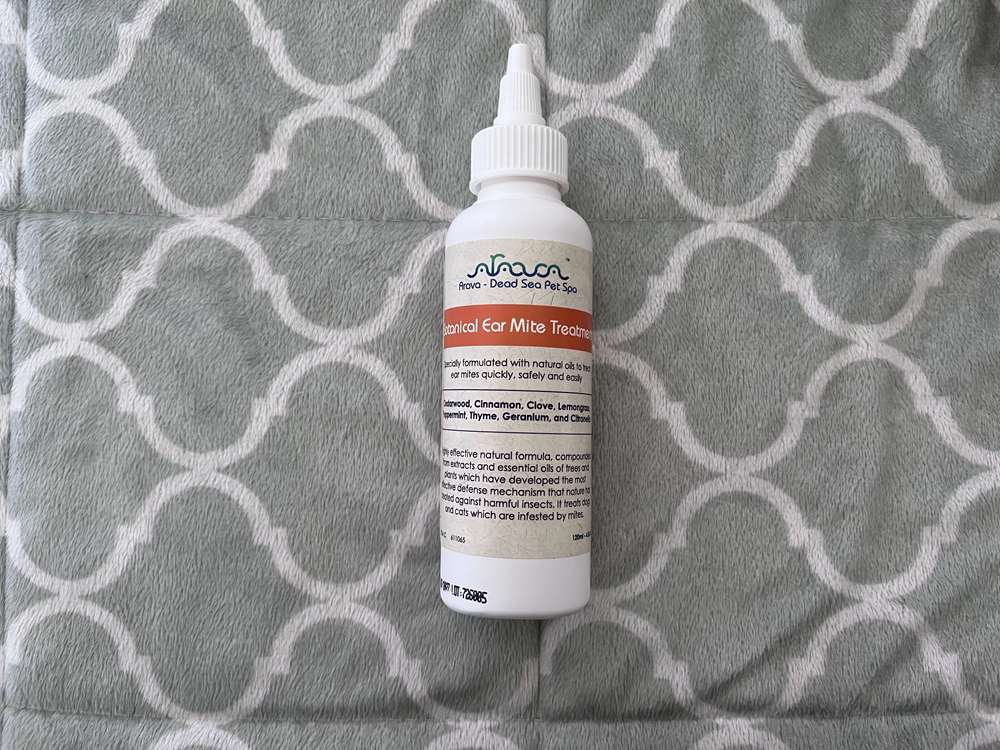
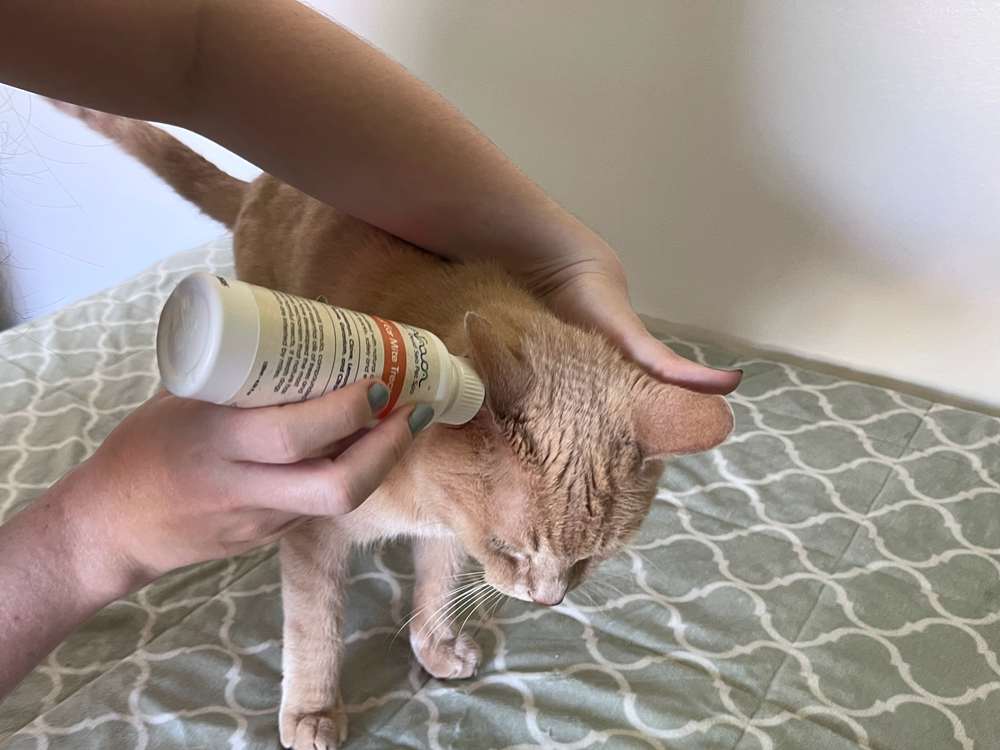

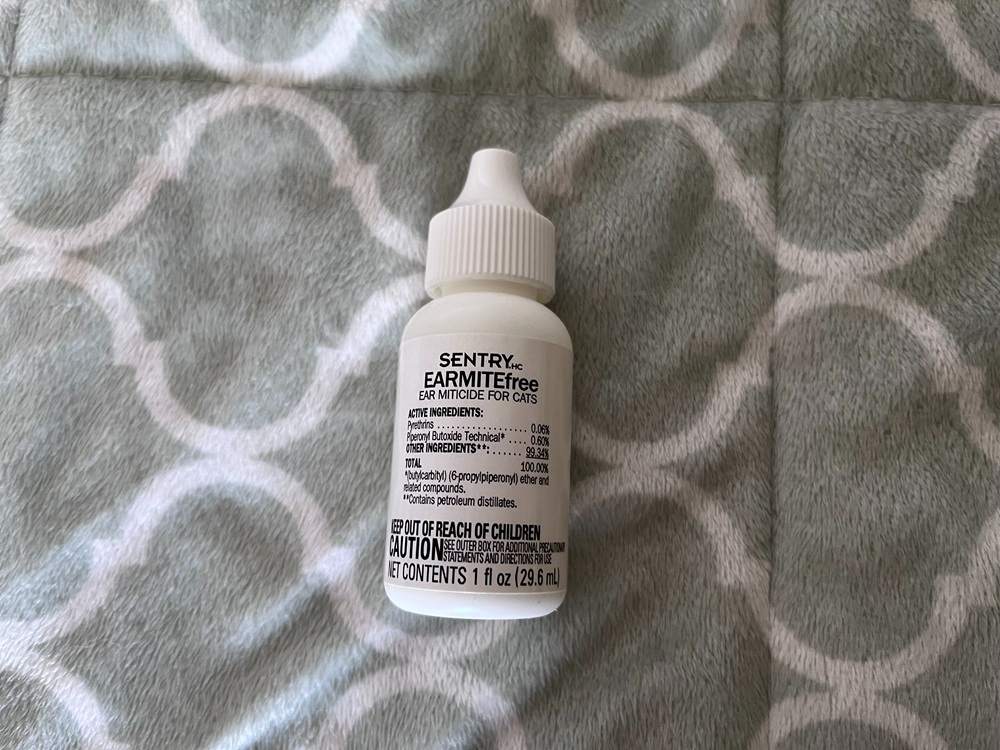
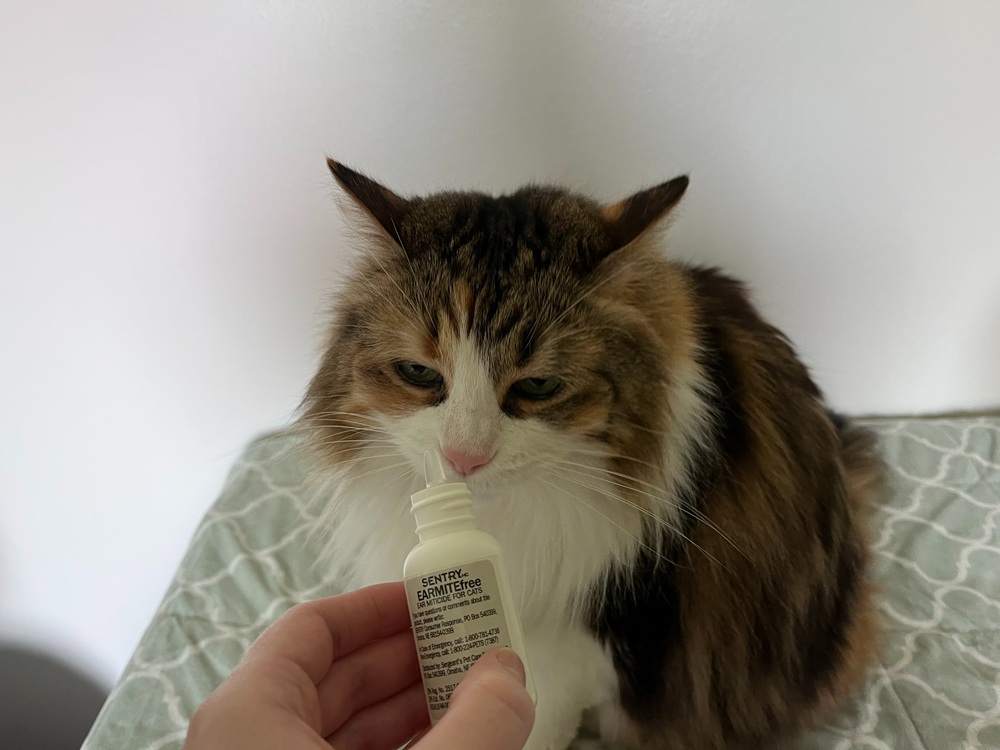

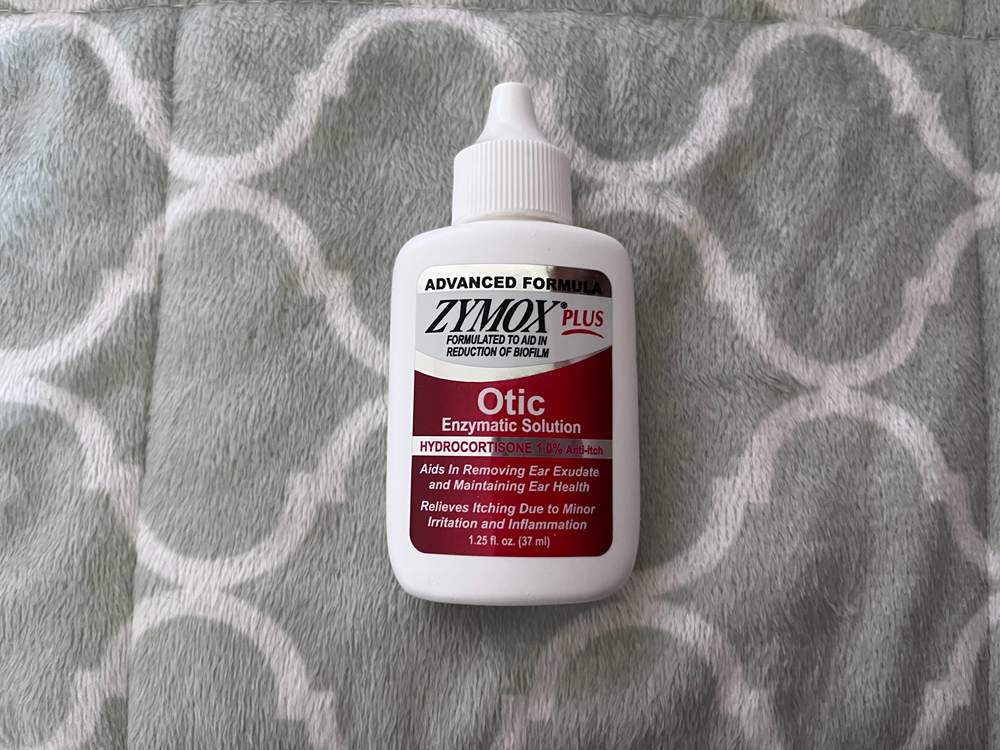
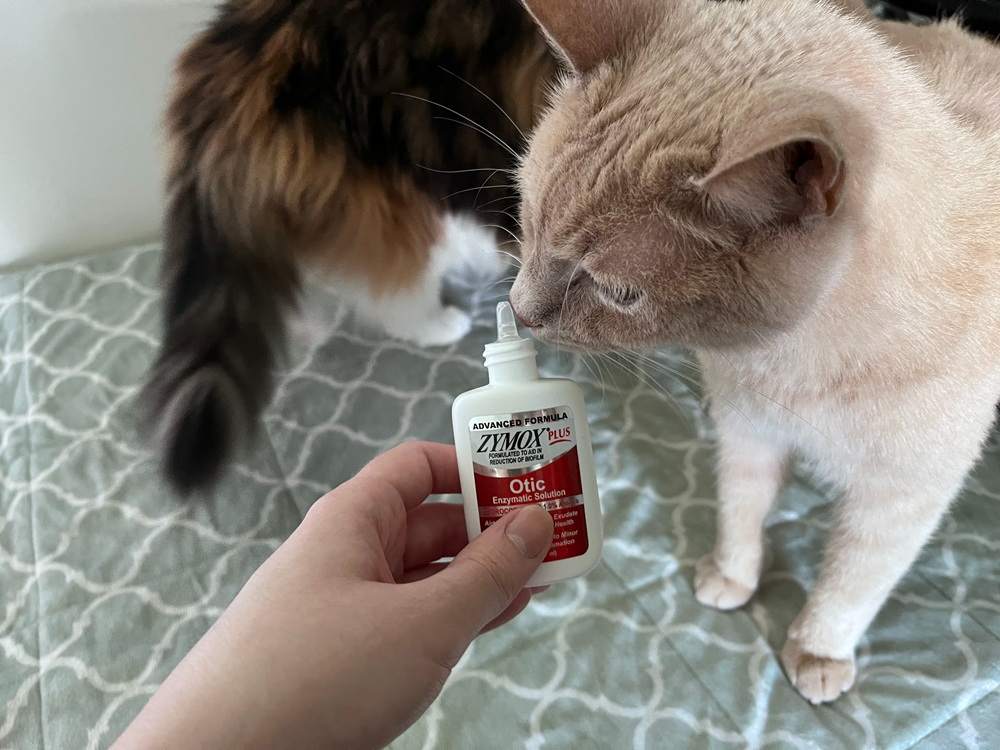
this isn’t seven treatments, it’s four.
pyrethrins, pyrethrins, pyrethrins, pyrethrins, selamectin, enzymes, and a mixed botanical.
pyrethrins can be deadly to cats. Don’t minimize that risk.
so then we have three, and of these, the enzyme one isn’t for mites. No enzyme treatment without chitinase will be really effective for mites, and most don’t include chitinase.
so now we have two, and one doesn’t work fast OR reliably, and the other one comes with a two hundred dollar surcharge for one vet visit with its inescapable bill padding, and of course the drug is overpriced because the company can gouge all it likes.
what would be nice would be an article about the fact that vet medicine has a gaping hole in it where effective mite treatments should be.
A cat moved in with me his ears are crusty and dirty and he just started walking in a circle to his water and food yet not eat much how do I treat him can’t afford to go to a vet.
Hi Charles, it’s hard to know exactly what’s going on in a cat’s ears without consulting a vet, but I would consider using Zymox’s otic ear solution, which is a great over-the-counter medication that can help with ear infections and soothe inflammation.
I would advise seeing a vet if you can to find out if this cat has any other issues that need to be addressed; it would be a good opportunity to check for a microchip as well.
Hope this helps!
Oral treatment of cats with earmites is there any? Something that can be given in their food or water. Remember one have earmites means all have it!
Hi Eddie! This would be a great question for your vet! I don’t have the expertise to answer this question myself but I did find an article published in 2017 which suggests that an oral medication called fluralaner is effective against ear mites in cats and dogs. Check it out here:
https://parasitesandvectors.biomedcentral.com/articles/10.1186/s13071-016-1954-y#:~:text=Topical%20administration%20of%20fluralaner%20was,dogs%2028%20days%20after%20treatment
“…cat-safe insecticides like pyrethins…” – Pyrethin is toxic to cats. This is a terrible source of info.
Hi there. You may appreciate this illuminating article on the differences between permethrin and pyrethrins. The short story is that there is a difference between natural pyrethrins and synthetic pyrethroids, including the permethrin common in dog flea and tick medications. The concentration of permethrin in these products is harmful to cats, but cat-oriented products containing pyrethrins are generally quite safe.
Thank you for this article. I found it very helpful. Not sure which one I will be going with but I got a lot of great advice. As for the ppl complaining about what was recommended. They also gave diy and those contain nothing that is going to hurt your cat, but you also have to wonder it they are going to help with ear mites. When it comes to fleas,ticks and ear mites we either deal with it and make out furbabies miserable or we look into the safest option that involves chemicals. So either furbaby miserable with ear mites and fleas or ticks or the use of a safe chemical for a sec of their life to make them health and happy. I don’t like the use of chemicals either but I don’t want my furbabies to suffer either. Best of luck on your personal choice.
The first complaint I saw about the title stating the best ear mite medication was in February. It is now the end of August and this list still tops Google when asked what is the best ear mite medication for cats. Thanks for the link, but when people are desperate I think clickbait is really a very low trick.
Hi Jodi, thank you. I’ve contacted one of our writers, and we’ve bumped the update to the top of our content calendar, so we should see this article revamped within the next week or two.
Hi Jodi, we’ve updated this article, so if you’re still in need of ear mite medication recommendations, you may find the updated version helpful. Thanks for pointing this out.
Agreed. There’s 5 min ill never get back. Thanks dipshitz!
I’m sorry about this. Again, you can get more ear mite-specific advice here: https://cats.com/ear-mites-in-cats
Really? The title of this page is best ear mite treatment and the best product is one that does not even address ear mites? Actually, none of those you “recommend” do. And you make no reference to ear mites in your comments about it? This site has lost all credibility. What a joke.
Thanks for the comment. This article is in need of an update; I’ve added it to our list of articles to update this year. In the meantime, here’s an article published on another site that may provide the solutions you need: https://www.kittycatter.com/best-ear-mite-medicine-cats/
Hello, I was wondering about the usage of essential oils such as the tea tree oil in these products. After reading some info on the topic, I have seen data telling that tea tree oil ans some other substances are actually toxic to cats and should not be used as mites/otitis treatment, especially if the cat has liver issues. At at the same time the doggie dailies has this oil in its ingredient list and is FDA-approved. How can I be sure that it won’t be dangerous to my pet?